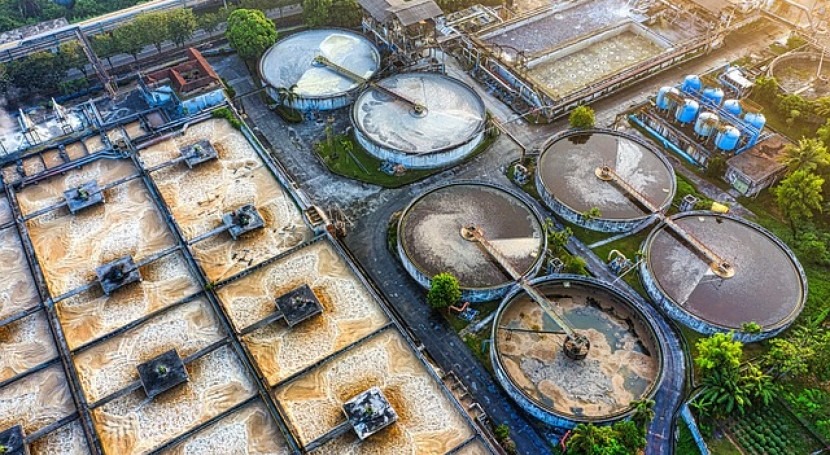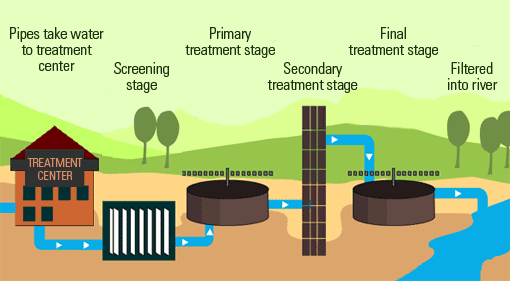Trick Difficulties in Urban Waste Water Treatment Approaches
Optimizing Drainage Treatment Processes: Techniques for Improved Water High Quality and Resource Recovery
In the world of wastewater treatment, the quest for enhancing effectiveness and sustainability through process optimization is a continuous search that holds immense relevance. By focusing on strategies tailored to boost water top quality while concurrently taking advantage of important resources, therapy plants can address pushing environmental problems while opening financial benefits. From sophisticated technologies to cutting-edge source recovery techniques, the landscape of wastewater therapy is advancing rapidly. As we delve into the complexities of enhancing these procedures, a world of opportunities emerges that promises not just cleaner water but additionally an extra sustainable future.
Significance of Process Optimization
Enhancing drainage treatment processes with precise procedure optimization is crucial for taking full advantage of efficiency and guaranteeing environmental sustainability. By fine-tuning each step of the therapy process, from first consumption to last discharge, water treatment facilities can achieve greater levels of impurity removal, reduce energy usage, and lessen the generation of waste by-products. Refine optimization includes assessing key efficiency indicators, such as hydraulic retention times, sludge retention times, and nutrient degrees, to recognize areas for renovation and execute targeted remedies.
Reliable process optimization not just boosts the general efficiency of drainage therapy plants however also adds to cost savings and regulatory compliance. By maximizing processes, operators can accomplish greater therapy abilities without the requirement for considerable facilities financial investments. In addition, enhanced treatment performance leads to cleaner effluent discharge, lowering the environmental influence on getting water bodies and environments.

Advanced Treatment Technologies
In the world of waste water therapy, the implementation of advanced treatment modern technologies plays a pivotal duty in enhancing the overall performance and efficiency of the therapy processes. These advanced modern technologies provide cutting-edge remedies to attend to intricate impurities existing in wastewater streams, ensuring the removal of contaminants to fulfill strict water top quality standards. Advanced therapy processes such as membrane bioreactors, ozonation, advanced oxidation procedures, and turn around osmosis make it possible for the thorough elimination of pollutants, including emerging pollutants like drugs and individual treatment items.
Moreover, these innovations assist in source healing by extracting valuable materials such as phosphorus, nitrogen, and energy from the wastewater. Advanced nutrient elimination modern technologies can recover phosphorus and nitrogen for reuse in farming fertilizers, while energy healing systems like anaerobic food digestion can harness biogas for electrical energy generation. By including sophisticated therapy technologies right into wastewater therapy plants, drivers can improve water high quality, reduce environmental effect, and relocate towards a more lasting and resource-efficient approach to wastewater monitoring.
Source Recovery Techniques
Resource recovery techniques in wastewater therapy procedures play a crucial function in maximizing the use of valuable sources contained within wastewater streams. These methods aim to essence and reuse products such as nutrients, energy, and water from the wastewater, transforming what was as soon as considered waste into useful sources. One usual source recovery strategy is the removal of nutrients like phosphorus and nitrogen from wastewater for reuse as fertilizers or in commercial procedures. Furthermore, energy recuperation techniques such as anaerobic food digestion and biogas manufacturing help harness the energy capacity of raw material in wastewater to generate power or warm.
Water recuperation methods, such as membrane layer technologies and advanced filtering systems, make it possible for the therapy and reuse of water for non-potable applications like watering or commercial procedures. By applying resource recuperation methods in wastewater treatment plants, not read here just can valuable sources be preserved and reused, but the total sustainability and performance of the therapy procedure can be dramatically boosted. As the emphasis on source shortage and ecological sustainability remains to expand, the relevance of incorporating resource healing methods into wastewater treatment procedures ends up being progressively apparent.
Sustainable Practices in Wastewater Treatment
Lasting techniques in wastewater therapy encompass an array of methods aimed at decreasing the ecological effect of therapy processes while taking full advantage of source recuperation. One essential aspect of sustainable wastewater treatment is the application of energy-efficient modern technologies to lower the carbon impact of therapy plants.
Furthermore, the fostering of sophisticated therapy modern technologies that advertise water reuse and recycling plays a vital role in sustainable wastewater monitoring. By dealing with wastewater to a high requirement, it can be repurposed for different non-potable applications, such as irrigation, industrial procedures, and even drinkable water production in some situations. This not only saves beneficial freshwater sources but additionally minimizes the volume of effluent released into the atmosphere.

Case Studies on Effective Optimization
As wastewater therapy centers increasingly concentrate on lasting practices, real-world study visit the site showcasing effective optimization techniques work as invaluable designs for sector improvement. One such study focuses on the execution of advanced nutrient removal modern technologies in a community wastewater therapy plant. By integrating biological nutrient removal processes and optimizing operational parameters, the center attained substantial decreases in nitrogen and phosphorus degrees released into receiving waters, ultimately enhancing general water quality.
One more remarkable instance study includes the integration of anaerobic digestion systems in an industrial wastewater therapy plant to boost energy recuperation and source efficiency (Waste Water Treatment). With the digestion of organic waste products, the center not only produced biogas for energy production but additionally lowered the volume of sludge calling for disposal. This twin benefit not just enhanced the plant's sustainability efficiency but likewise resulted in cost financial savings
These effective optimization strategies demonstrate the possibility for wastewater therapy facilities to attain both economic and environmental benefits via innovative methods and efficient procedures. By gaining from these situation studies, industry specialists can further maximize their own operations to enhance water high quality and source recovery.
Verdict
In final thought, optimizing waste water treatment processes through innovative technologies, source healing strategies, and lasting methods is crucial for enhancing water top quality and making best use of source healing. Waste Water Treatment. Study have demonstrated successful implementation of optimization strategies in different wastewater treatment facilities. By proceeding to prioritize process optimization, we can guarantee effective and effective treatment of wastewater, eventually bring about a much more sustainable and environmentally friendly strategy to managing water sources
By fine-tuning each action of the treatment process, from preliminary consumption to final discharge, water treatment facilities can accomplish higher degrees of impurity elimination, minimize power intake, and decrease the generation of waste by-products.In the realm of waste water treatment, the execution of innovative therapy modern technologies plays an essential duty in improving the overall performance and efficiency of the therapy processes. By integrating innovative treatment technologies right into wastewater therapy plants, operators can enhance water top quality, reduce environmental effect, and move in the direction of a more lasting and resource-efficient technique to wastewater monitoring.
By executing resource recovery methods in wastewater therapy plants, not only can valuable sources be saved and reused, yet the total sustainability and efficiency of the treatment process can be considerably improved. Lasting methods in wastewater therapy incorporate a range of approaches aimed at decreasing the environmental influence of therapy processes while making the most of resource recuperation.